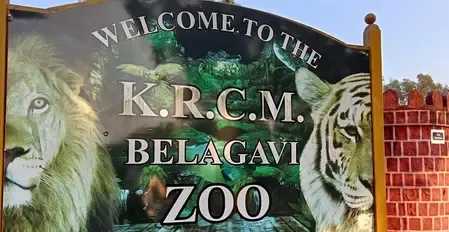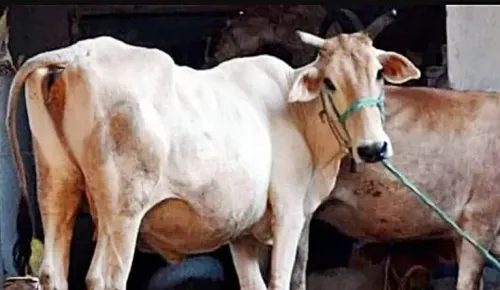What Caused the Death of 30 Blackbucks at Karnataka's Mini Zoo?

Synopsis
Key Takeaways
- 30 blackbucks have died at the Kittur Rani Chennamma Mini Zoo.
- Suspected cause: Bacterial infection (Hemorrhagic Septicemia).
- Investigation ongoing into possible negligence by zoo authorities.
- Remaining blackbucks are under medical supervision.
- Community outrage over conservation concerns.
Belagavi (Karnataka), Nov 17 (NationPress) The number of blackbucks that have died at the Kittur Rani Chennamma Mini Zoo in Belagavi district has tragically increased to 30 as of Monday, following the death of another critically endangered animal, reportedly due to a bacterial infection. The remaining blackbucks are currently under close observation. A rigorous medical examination is being conducted at the zoo to address the survival threats facing these animals.
The unexpected deaths of the blackbucks, which attracted thousands of visitors each day, have raised numerous concerns. Tourists from Belagavi and neighboring districts, as well as from Maharashtra, frequently visited the zoo to admire these animals.
Initial findings from post-mortem examinations suggest a bacterial disease outbreak within the zoo.
Previously, the alarming death of 29 blackbucks over just three days had stirred anxiety throughout Karnataka, prompting authorities to await results from the Forensic Science Laboratory (FSL) and post-mortem examinations to determine the cause.
The mass fatalities of these blackbucks, an endangered species safeguarded under the Wildlife Protection Act, have ignited outrage among conservationists and animal advocates.
Authorities confirmed that the post-mortem examinations indicate that the blackbucks succumbed to Hemorrhagic Septicemia (HS), a serious and often lethal bacterial disease. This situation bears resemblance to the Corona pandemic, as this bacterial infection is known to spread among herbivorous animals, according to officials.
A second round of post-mortem examinations on three blackbucks was carried out on Sunday by a team of two veterinarians from Bengaluru's Bannerghatta National Park, who also collected samples of the food provided to the blackbucks over the past week.
The incident involving the death of 30 blackbucks at the Kittur Chennamma Mini Zoo has escalated into a serious issue. Inconsistencies in statements from officials have heightened suspicions.
It is noteworthy that these blackbucks died under questionable circumstances at the Kittur Chennamma Mini Zoo located in Bhutaramanahatti village of Belagavi taluk. The total of 30 blackbucks perishing within four days has raised alarms.
On November 13, eight blackbucks died, and samples were dispatched to the laboratory to determine the cause of death. Even before the results were available, another 20 blackbucks died. On Sunday, yet another blackbuck passed away within the zoo premises.
An investigation is currently underway to ascertain whether the mysterious fatalities resulted from negligence by the Forest Department or were due to disease. Forest Minister Eshwar Khandre has mandated stringent precautions and warned of repercussions if negligence by the staff is discovered.
Preliminary findings have pointed to a bacterial infection as the reason for the mass deaths, raising serious questions regarding the alleged negligence of the zoo's veterinary doctors and forest personnel.
Experts have indicated that the death toll could have been significantly lower had the infected blackbucks been identified early and promptly isolated. The absence of regular health monitoring and delays in addressing initial signs of illness are viewed as major oversights by the authorities responsible for the well-being of these animals.
The blackbucks were relocated from the Gadag zoo approximately four to five years ago. The animals were aged between four and six years.









